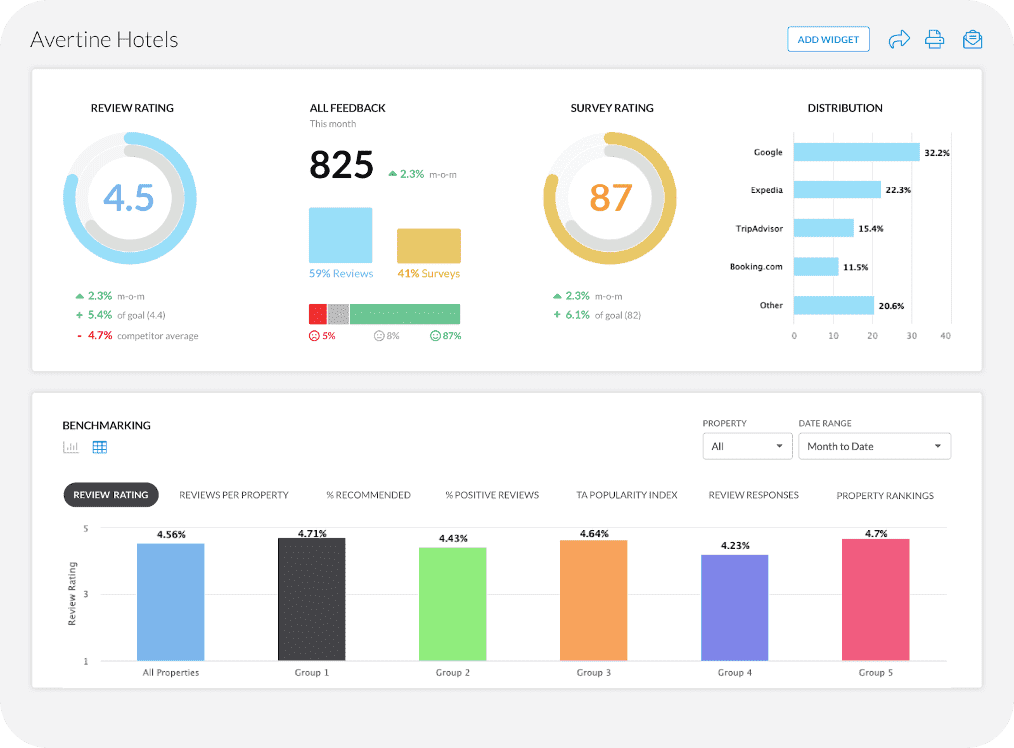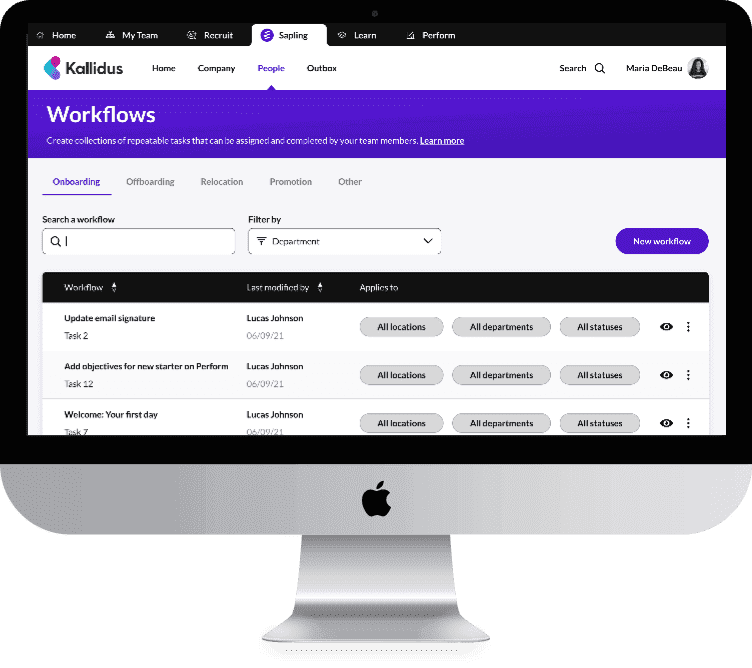Every few years, new tech stacks emerge that promise faster builds and better developer experience. Moreover, one of the latest and most exciting in the tech world is the T3 Stack. It’s a modern trio of TypeScript, Tailwind, and tRPC.
Furthermore, this stack is quickly gaining popularity among startups and SaaS platforms for its efficiency and scalability across entire applications. Zoom even uses the T3 Stack to build its reference apps.
So, if you are building a web app or scaling an existing product, hiring T3 Stack developers can make a huge difference to your project’s success.
Hence, in this guide, we’ll look into what makes T3 Stack so powerful and the qualities to look for when hiring T3 c.
What is the T3 Stack?
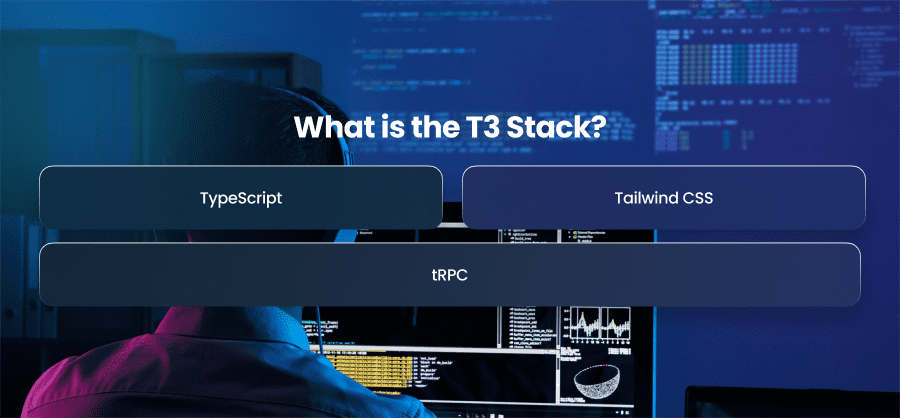
The T3 Stack is a combination of TypeScript, Tailwind CSS, and tRPC. Moreover, these tools help developers build and manage modern web applications.
TypeScript
TypeScript is a part of JavaScript that adds features like static typing. Additionally, it aids developers in identifying mistakes early on rather than after they are in production. Hence, this makes apps more reliable and maintainable. Furthermore, TypeScript not only brings stability to JavaScript codebases but also improves developer productivity with better support and refactoring capabilities.
Tailwind CSS
A CSS framework is called Tailwind CSS. Instead of creating intricate CSS classes or bespoke styles, developers may utilize prebuilt classes like flex or text-center straight in their HTML or JSX. As a result, this method enables smaller CSS bundles and quicker styling, particularly when used with PurgeCSS.
tRPC
tRPC stands for TypeScript Remote Procedure Calls. Moreover, it allows you to create type-safe APIs without needing to manually define API schemas or contracts. Also, in traditional full stack applications, you often need to define types both on the client and server side. This leads to duplication and potential mismatches. So, tRPC solves this by generating types automatically from your server side functions to your client and ensures type safety.
How do They Work Together?

The Foundation
TypeScript acts as the backbone of the T3 Stack. Moreover, it enforces strict typing across your entire codebase, from the database layer to the UI. Whether you’re defining server endpoints with tRPC or writing client side components styled with Tailwind, TypeScript ensures that your types remain consistent and reliable.
For example, a database schema might define a user type with properties like id and email. With TypeScript and tRPC, this exact type can flow automatically through to the client without manual duplication. Moreover, it reduces the risk of data mismatch bugs.
UI Development
While TypeScript ensures the structure of your application, Tailwind CSS takes care of the styling layer. Moreover, rather than juggling custom CSS files or bloated component libraries, developers can apply Tailwind’s utility classes in their markup. Moreover, this inline styling approach speeds up the design process and leads to highly consistent and responsive UIs.
Furthermore, because Tailwind is entirely based on utility, it pairs well with modern component libraries like React. Also, you can create reusable components that adhere to your design system without writing a single line of custom CSS.
Moreover, Tailwind’s integration with frameworks like Next ensures that unused CSS is purged in production builds. Hence, this keeps your apps lightweight and fast.
Type Safe Communication
tRPC solves a difficult problem in full stack development: ensuring that client code and server side APIs are always in sync.
Traditionally, developers create an API route and separately write client code that consumes that API. However, this often leads to a disconnect if the server response shape changes and the client breaks unless updated manually.
Hence, tRPC eliminates this by letting you define your server side logic and automatically infer the types for your client side calls.
- No manual API contracts.
- No need for Swagger or GraphQL Schemas.
- Complete type safety by default.
Hence, this communication means that changes made to server side procedures are instantly reflected on the client side during development. This reduces the chances of runtime errors and speeds up feature delivery.
Why the T3 Stack is Gaining Popularity?

Type Safety
One of the biggest issues in web development is type mismatch, where the backend sends a response that the frontend isn’t expecting. Hence, this causes runtime errors.
Nonetheless, type definitions immediately go from the server to the client because of the synergy between TypeScript and tRPC. This eliminates the need to redefine or worry about inconsistencies if you construct a data structure on the server and utilize it immediately on the client.
Hence, this type of safety improves reliability and cuts down debugging time. And, because of this, developers are leaning more towards T3 Stacks.
Faster Development Cycles
Startups need to move quickly from idea to MVP to production. Hence, the T3 Stack can speed up development by eliminating boilerplate code. tRPC removes the need for manually writing API schemas.
Also, Tailwind CSS simplifies styling and allows rapid UI builds without switching back and forth between HTML and CSS files. Also, with TypeScript, developers can autocomplete code and get better IDE support.
Minimal Setup
The most appealing aspects of T3 Stack are its minimalistic philosophy: use only what you need without the extra baggage. Moreover, many modern frameworks are bloated with heavy dependencies and complex configurations, which can overwhelm development teams.
Therefore, the T3 Stack emphasizes minimal configuration out of the box and a clear and logical structure. Moreover, this simplicity makes it especially attractive for small teams or solo developers who want to move fast without sacrificing quality.
Tailored for Modern Web Applications
The modern web demands responsive and high performing web applications. Hence, the T3 Stack can help in building modern web apps. Moreover, TypeScript ensures codebases are scalable and maintainable. Also, Tailwind CSS ensures UIs are responsive and lightweight. On the other hand, tRPC ensures real time and type safe communication between client and server.
So, whether you’re building SaaS platforms or mobile friendly web apps, T3 Stack gives you the performance and scalability you need out of the box.
Community and Ecosystem
Another reason for the growth of T3 Stack is the vibrant and passionate community around it. Moreover, developers are creating plugins and templates quickly.
Furthermore, the core contributors, especially from communities like Theo’s T3 Stack project and others, are highly active and focus on practical solutions.
Great Developer Experience
Developer experience is finally getting the attention it deserves. Happy developers build better products. Moreover, the T3 Stack provides immediate feedback loops. Also, it provides rich editor support thanks to TypeScript.
Furthermore, Tailwind’s utility approach means you can see your changes as you make them. Also, both the frontend and backend layers feel unified without any need for context switching.
When Should You Use the T3 Stack?
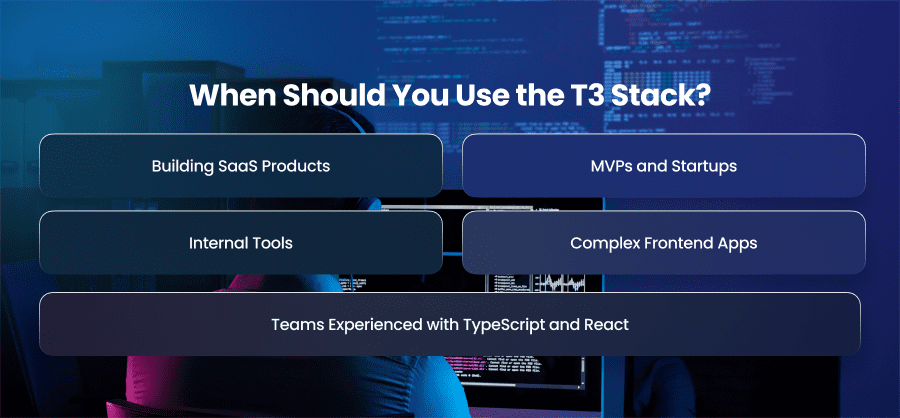
Building SaaS Products
SaaS applications require constant iteration and reliable interfaces. Moreover, the T3 Stack offers a perfect balance between quick development and strong architectural practices.
TypeScript enforces type safety across the entire code base and catches bugs at compile time, and ensures that backend and frontend always stay in sync. Moreover, tRPC reduces friction by allowing developers to call backend procedures directly from the frontend without the need for manual API schema maintenance.
Furthermore, Tailwind CSS accelerates UI development and enables quick prototyping and beautiful designs without heavy CSS frameworks.
MVPs and Startups
MVPs must be released promptly by startups and early-stage businesses to validate concepts and get capital. Furthermore, because it enables speedier development without compromising quality, the T3 Stack is especially well-suited for these contexts.
Compared to conventional stacks, developers can iterate and bring out features more rapidly with less boilerplate and a tight feedback loop between the frontend and backend. TypeScript guarantees that the code is scalable and resilient even in the face of rapid development cycles. Tailwind CSS speeds up design work and professional UIs.
Internal Tools
Internal tools like dashboards and admin consoles often need to be built quickly, with frequent updates based on internal feedback.
Therefore, T3 Stack makes this process incredibly efficient. Hence, Tailwind CSS allows developers to build flexible and responsive interfaces without building custom UI components from scratch. Moreover, tRPC can streamline backend communication and make it easy to build complex workflows and data pipelines without worrying about maintaining a separate API contract.
Since internal tools often have changing requirements, the T3 Stack’s speed and type safety allow teams to adapt quickly.
Complex Frontend Apps
Applications with rich user interactions, such as dynamic forums and live collaboration tools, can benefit massively from the T3 Stack’s strengths.
Therefore, managing complex client server interactions becomes much easier with tRPC, where type errors are caught at compile time instead of runtime. Moreover, developers can confidently refactor backend procedures knowing that any breaking changes will be immediately flagged. Hence, TypeScript ensures consistency across deeply nested components and complex state management scenarios.
Additionally, Tailwind CSS also shines here, allowing precise control over layouts and styling for apps where responsiveness and interactivity are necessary.
Teams Experienced with TypeScript and React
If your development team is already skilled in TypeScript and React, then implementing the T3 Stack can be a wise choice. The principles and best practices utilized in T3 will also be easy for developers used to modern TypeScript programming to understand. Additionally, teams may devote more effort to resolving business issues rather than fumbling with new models or technologies.
What to Look for in T3 Developers?
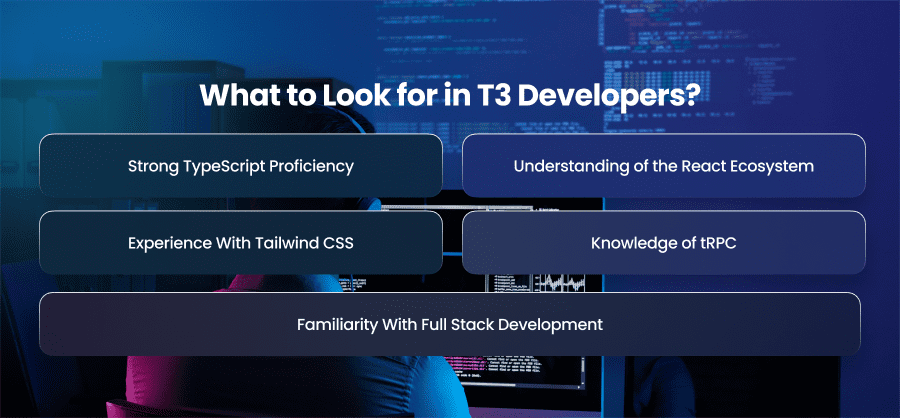
Strong TypeScript Proficiency
Since TypeScript is the backbone of the T3 Stack, a T3 developer should have an excellent command of it. Moreover, a great T3 developer should understand concepts such as generics and conditional types. Also, they should be comfortable setting up strict type systems that improve developer experience and ensure type safety across both the frontend and backend. Moreover, their TypeScript skills should allow them to build resilient applications where bugs are caught at compile time rather than in production.
Understanding of the React Ecosystem
Most T3 projects rely heavily on React. Therefore, a T3 developer should not only know how to build React components but also be familiar with modern practices like hooks and context API. Also, they should know how to structure React applications and optimize performance. Moreover, they should also know how to maintain readability as complexity grows.
Experience With Tailwind CSS
Knowing utility classes is only one aspect of Tailwind CSS; another is knowing how to create designs that are easy to maintain and tidy. Additionally, a competent T3 developer should be able to use Tailwind to produce responsive layouts and consistent stylistic techniques. They should also know how to optimize Tailwind builds for production and modify the Tailwind configuration to adhere to branding standards.
Knowledge of tRPC
tRPC is the differentiator of the T3 Stack. Therefore, experience is critical. An excellent T3 developer should understand how to create tRPC routers and manage input validation. Also, they should be able to enforce type safe communication between frontend and backend. Also, they should be able to design APIs that are scalable and easy for other developers to use. A developer who knows how to set up authentication and authorization flows within tRPC is even more valuable.
Familiarity With Full Stack Development
T3 Stack developers should be proficient in full stack development. Moreover, they should be able to understand database management and server side rendering concepts. Additionally, they should have experience working with modern hosting providers such as Vercel or platforms like AWS and integrating services like Stripe.
Final Words
The T3 Stack is laying the modern foundation for building high quality and scalable applications. Moreover, its focus on type safety and performance makes it a great choice for companies that want to future proof their products.













